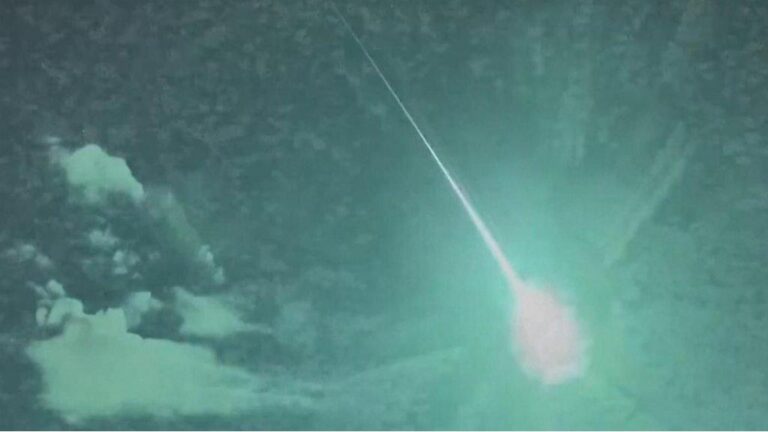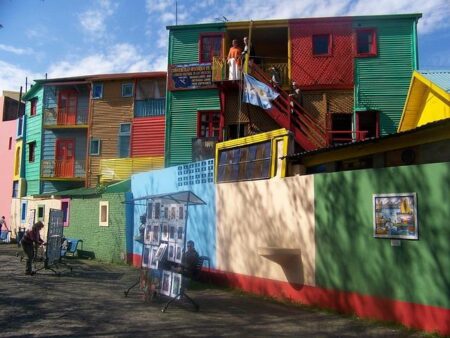A spectacular fireball illuminated the skies over Spain and Portugal last night, captivating thousands of eyewitnesses across the Iberian Peninsula. The dazzling meteor, visible from multiple regions, streaked across the horizon in a brief but breathtaking display that has sparked interest from both the public and astronomers. Authorities and experts are now analyzing data to better understand the nature and trajectory of this rare celestial event, which has become the latest reminder of the dynamic activity occurring beyond our atmosphere.
Fireball Captivates Witnesses Across Spain and Portugal as It Illuminates Night Sky
In a breathtaking celestial event witnessed by thousands, a vibrant fireball streaked across the skies of Spain and Portugal late last night, leaving a trail of awe and wonder in its wake. Reports from various regions describe the fireball as a blazing ball of light, moving at incredible speed and illuminating the darkness with hues ranging from electric blue to fiery orange. Many observers captured the phenomenon on video, sharing their experiences on social media platforms, sparking widespread fascination and scientific curiosity.
Key details from the event include:
- Time of occurrence: Approximately 11:45 PM local time
- Visibility: Spanned across major cities including Madrid, Lisbon, and Seville
- Estimated speed: Over 15 km/s
- Estimated size: Comparable to a small car before atmospheric entry
- Duration: Approximately 6 seconds of visible flight
| Region | Peak Brightness | Observer Reports |
|---|---|---|
| Madrid | Magnitude -8 | Flashing green and white light |
| Lisbon | Magnitude -7 | Loud sonic boom reported |
| Seville | Magnitude -6 | Trail of smoke visible for minutes |
Experts Explain the Science Behind the Spectacular Fireball Event
The dazzling fireball witnessed soaring across the skies of Spain and Portugal was not just a spectacle but a fascinating display of cosmic phenomena. Experts clarify that what observers saw was a meteoroid entering Earth’s atmosphere at tremendous speeds, typically ranging from 11 to 72 kilometers per second. The intense friction between the meteoroid and atmospheric particles causes it to heat up, producing the bright streak of light commonly known as a fireball. Unlike ordinary meteors, fireballs are exceptionally bright, often outshining Venus, and can sometimes be accompanied by sonic booms due to shockwaves created when these space rocks break apart.
Scientists emphasize several key factors that contribute to the brightness and duration of such fireball events:
- Size and composition: Larger meteoroids or those rich in metallic elements tend to produce more spectacular light shows.
- Entry angle: Shallow angles increase the time a fireball remains visible, enhancing the viewing experience.
- Velocity: Higher speeds result in more significant heating and fragmentation, amplifying luminosity.
| Factor | Impact on Fireball |
|---|---|
| Size | Determines brightness & fragmentation |
| Composition | Metal-rich meteoroids glow brighter |
| Entry Angle | Longer sighting with shallow angles |
| Velocity | Increases heat and light intensity |
Safety Tips for Observing Meteor Phenomena and Reporting Unusual Sightings
When witnessing breathtaking meteor phenomena such as fireballs, safety is paramount. Observers should always choose open areas away from traffic and avoid looking directly into bright meteor flares to protect their eyes. Using proper nighttime viewing gear like binoculars or telescopes can enhance the experience while maintaining a safe distance. Additionally, be mindful of your surroundings to prevent trips or falls in the dark, especially in unfamiliar locations. Staying warm and having a flashlight handy can make long observation sessions more comfortable and secure.
If you spot an unusual or particularly bright meteor, reporting it helps scientific communities track meteor activity and identify potential meteorite falls. Take note of the exact time, direction, and brightness, and consider submitting your sighting through reputable platforms such as the International Meteor Organization. Here’s a quick checklist to ensure your report is accurate and useful:
- Record the date and time of the event (in local and UTC time).
- Estimate the meteor’s trajectory using nearby landmarks.
- Note any sounds or fragments observed.
- Capture photos or videos if possible without risking safety.
- Submit the report to official meteor observation networks.
| Observation Step | Key Detail |
|---|---|
| Time | Precise within 1 minute |
| Direction | Use compass or landmarks |
| Brightness | Compare to known stars/planets |
| Additional Notes | Sounds, fragmentation, color |
Key Takeaways
As the dazzling fireball illuminated the skies over Spain and Portugal, residents and visitors alike were reminded of the extraordinary natural phenomena that continue to captivate and inspire. Witnesses shared awe and excitement as the bright streak offered a rare glimpse into the vastness of our universe. Scientists are now analyzing data from the event to better understand its origin and trajectory. This spectacular moment serves as a powerful reminder of the dynamic and ever-changing cosmos that surrounds us.




